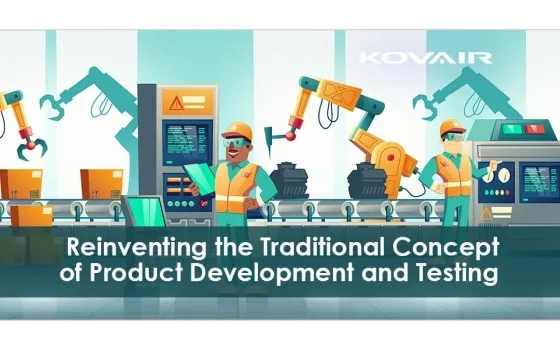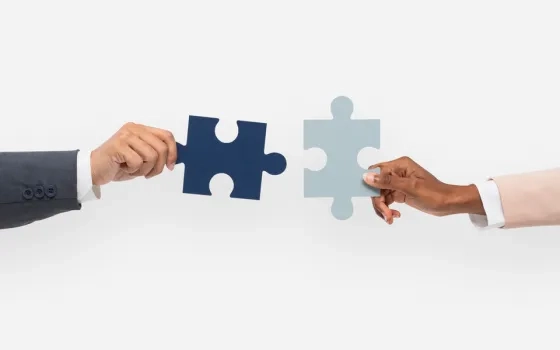Manufacturing companies are a key piece of the product development and testing process. When products are designed to hand in hand with manufacturers, there is an opportunity to avoid surprises, pass safety tests early on, and meet regulatory requirements. The likelihood of compliance is also greater.
Continual testing throughout the development process by manufacturers and establishing safety requirements as a priority can help reduce costly, time-consuming designs that need to be redone multiple times. This new process can get a product on the market more quickly and efficiently. It will help the overall success of the merchandise, but also help the company stick to deadlines and achieve overall success in a product launch.
There are a lot of key players to consider during product development and testing. But the responsibilities of the manufacturers have reinvented the process by creating a space for entrepreneurs and businesses to determine the usability, durability, and quality of their product way before it hits store shelves. By helping companies save time and money, manufacturers are providing their clients with much more than simply building a product.
Rethinking traditional product development processes and testing
The traditional concept of new product development includes several basic steps that can take quite a long time and lots of preparation. But if one is missed or not completed with accuracy, it could lead to the downfall of a product.
Recently, manufacturing companies have reinvented their roles to help improve this process. They play an essential role in the success of products, which depend on safety test requirements and prototype feasibility to prosper. Let’s break it down:
Brainstorm
When you discover an innovative, unique product that is not yet available in the market, it’s important to determine the industry’s greatest needs. Consider a target audience, potential competitors, shortcomings of existing products, common concerns, and questions that need to be answered. Extensive competitive analysis is needed to determine how a new or similar product can be better than what’s already available.
This stage is also a time to use product testing to determine the feasibility of the prototype and design. It can help eliminate ideas that won’t work and select the best-performing ones. Harvard Business School professor Clayton Christensen previously stated that over 30,000 new products are introduced every year, and 95% fail.
After identifying the key points stated above, the information can be used to find solutions before it’s too late.
Research and give the product a little exposure
After the first step, the product should be refined enough for screening. At this point, the prototype should be to the point where it is usable and can undergo basic tests.
Conduct interviews with people inside and outside of the company to gather useful information. For example, engineers, field experts, department heads, and other knowledgeable people in the industry should be contacted and try the product.
Eventually, target customers can be contacted to give an honest review. Target customers and experts will help solidify the validation of the product. This will also help determine quality assurance, identify issues with creating the product, or provide insight for developing engineering guidelines. It will also help you polish the idea and pitch that you will later use during the final stages.
Create a prototype
Once you have your idea polished, create a prototype! It can be of either the actual product sent for final approval or an approximate mockup. Some businesses or entrepreneurs choose to run a small-scale release at this time. It’s also a good time to test the product on another target audience. After receiving feedback, be sure to examine the product and make sure it is ready for the manufacturers.
Ensure product safety through testing
Product testing is a crucial piece of the product development puzzle. It is to ensure safety for all consumers. Companies are required by federal law in the United States to have their products tested before they hit the market. If a piece of merchandise fails the safety test, companies cannot legally sell them.
Testing a new product’s safety also reduces worries about liability and protects the manufacturer in the case of a product malfunction. Waiting to test a product until right before it is supposed to launch can result in companies spending more money, falling behind, delaying the launch, competitors hitting the market first with similar products, and hurting the company’s reputation. Testing must be a priority for companies even as they search for a manufacturer.
During the manufacturing stage, it is also significant to think about:
- Costs
- Pricing
- Picking the right manufacturer
- Required materials
- How much time it will take to make the product
If you are looking to save a little extra money, this is not the place to do it. Paying for quality manufacturing is key to a successful product that will – hopefully – keep customers coming back for more.
Manufacturers that work with overseas clients typically belong in one of the three following categories:
- Trading companies: They make their money by adding a margin of the cost to the product’s costs. They are also usually involved with a larger array of product categories.
- Wholesalers: They buy the product in bulk and add their margin to the total cost.
- Sourcing agents: They usually work for one of the organizations above.
When you have found a factory you want to work with, it’s significant to validate the legitimacy of their services. You can do this by seeing what trade shows they attend, confirming business licenses or certificates, setting up a meeting, and researching their overall online presence.
Commercialization of the product
Before releasing the product into the market, tighten up details, identify potential problems, create solutions and make any adjustments that can be completed before the launch. The following checklist of considerations should be paid attention to with great care:
- How to manage all of the production aspects
- How you will set up production
- How to work with your supply chain after the launch
- What manufacturing partners will help during production or help drive success after the product is launched
- How you will present and package the product for marketing and sales
- How you can present and package the product when sending it to customers
- How you will distribute your product
- Where an inventory of product sizes and in-stock items will be kept
Once the product is in its final stage of the manufacturing process, products should be sent to trusted customers and other partners for beta testing so they can submit feedback.
Once the product launches into the marketplace, it should be as close to the desired product as possible. Engineering and manufacturing employees may need to be on standby to address issues or problems that early customers speak about.
Supporting operations should also be prepared, including customer service, technical support, marketing, supply chain, shipping, etc. These should be in place to help customers as soon as the product launches.
At the same time, the company should be working closely with the manufacturer to make any last-minute changes that arise during the launch. It’s significant to work with the manufacturer every step of the way during the launch so that a company does not prematurely drop a product that does not have enough items in stock or enough in the desired sizes or types. The manufacturer plays an essential role in helping a brand achieve success.
The vital role of manufacturers
As previously stated, manufacturers and importers are required by federal law in the United States to test “consumer products for compliance with consumer product safety requirements.”
When manufacturers are involved in the development process, they can determine the usability of a product early on. If they are not involved until the end of the development process, the product may not pass safety requirements. This could delay product launches for weeks or months.
Product testing is also significant for manufacturers because it solidifies quality assurance, gives insight into system-level functions, catches product defects early in the development process, and figures out what a product can endure.
Stress testing the product is a significant part of figuring out whether the product will be functional for customers receiving it under certain circumstances. You need to know if it will be functional in cold and warm temperatures, all seasons of weather, different air pressure levels, and other potentially destructive scenarios. This will help determine if there are defects or quality issues in the product. If something is wrong, manufacturers can alert the company or inventor promptly. This will give them plenty of time to fix the issue before the desired product launch date.
During this time of re-work, manufacturers can introduce real-life scenarios that the product could face during its lifetime without waiting for the duration of the product’s life to end. Manufacturers can ensure that corrosion doesn’t occur to the product by introducing it to certain materials (like saltwater) to see if a reaction occurs.
While talking with experts and having target customers review the product have a definite place in the product testing and development process, manufacturers have reinvented the process by saving inventors time and money. Manufacturers can give companies peace of mind that when their product hits the market it is usable, durable, safe, and high-quality.
Source: How Manufacturing Companies can Reinvent the Traditional Concept of Product Testing and Development































